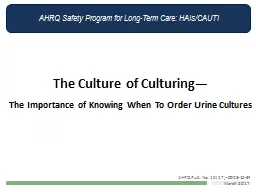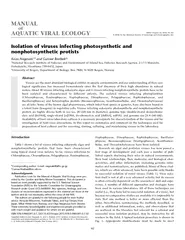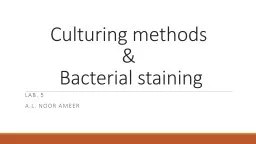PPT-The Culture of Culturing—
Author : aaron | Published Date : 2018-10-31
The Importance of Knowing When To Order Urine Cultures AHRQ Pub No 1617 000316EF March 2017 Upon completion of this training participants will be able to Explain
Presentation Embed Code
Download Presentation
Download Presentation The PPT/PDF document "The Culture of Culturing—" is the property of its rightful owner. Permission is granted to download and print the materials on this website for personal, non-commercial use only, and to display it on your personal computer provided you do not modify the materials and that you retain all copyright notices contained in the materials. By downloading content from our website, you accept the terms of this agreement.
The Culture of Culturing—: Transcript
Download Rules Of Document
"The Culture of Culturing—"The content belongs to its owner. You may download and print it for personal use, without modification, and keep all copyright notices. By downloading, you agree to these terms.
Related Documents













![[DOWNLOAD] - Ferment: A Guide to the Ancient Art of Culturing Foods, from Kombucha to](https://thumbs.docslides.com/891663/download-ferment-a-guide-to-the-ancient-art-of-culturing-foods-from-kombucha-to-sourdough-fermented-foods-cookbooks-food-preser.jpg)
